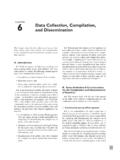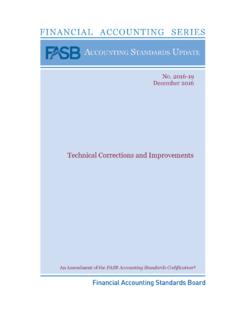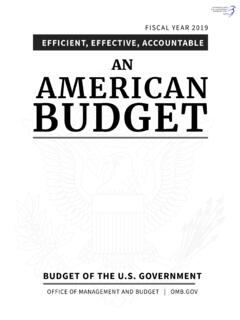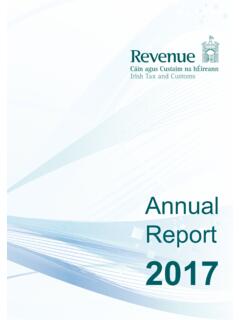Transcription of FI$Cal Terminology
1 Page 1FI$Cal TerminologyA Personal Activity Sheet (PAS) A timesheetAbatements Reductions to expenditures that have already been made Accounts Payable A claim against a State Department or agency for money owed to the vendorAccounts Receivable (AR) A claim against a customer (debtor), such as a person, business, or governmental entity for money owed to the stateActivity ID A lower level structural value that is created to organize tasks that support the higher level cost objective. Activities are the level to which charges are incurred and must be associated to Project IDsActivity ID A lower level structural value that is created to organize tasks that support the higher level cost objective. Activities must be associated to a Project ID and are the level to which charges are incurredAd Hoc Approval System will allow authorized user(s)
2 To insert additional approvers during the workflow processAdjustments Corrections to an invoice previously established in the systemAdvance Collections Revenue and Reimbursements collected in advanceAged Receivable A receivable that is overdue and has not been collectedAM Business UnitDepartmental Reporting IdentifierAmendmentChanges to an existing solicitationArbitrage The ability to obtain tax-exempt bond proceeds and invest the funds in higher yielding taxable securities, resulting in a profitAs-Is Processes The current or existing business processes performed by the StateAward ID Established when grant award is accepted. Unique ID established in the system to link Grant with Customer ContractBanks Any financial institution with which State agencies maintain a banking relationship Baseline SurveyThe first conduct of the User Readiness Survey in a wave to determine readiness for implementation and transition (applies to all waves)BidA submission of an offer or an event (solicitation)Bid EventPurchasing of goods and/or services, most typically associated with solicitationsBid Factor Evaluation factors for weighting responses to an eventBidder Organizations that are interested in doing business with the State, and interested in responding to solicitations.
3 Bidders are stored separately from vendors. Bidder tables act as a holding place until the bidder is awarded an event. Once an event is awarded to a registered bidder, they become a vendorBilling Amount Amount and associated currency billed for the statement lineBilling/Revenue (Reimbursements) Plan Events Line level detail of the Billing/Revenue Plan that individual Milestones, % Completes, and Accounting Dates are enteredBilling/Revenue (Reimbursements) Plans Schedule and definition of milestones, as applicableBlind receiving PO quantity is not displayed during receiving to require the receiver to enter an actual receipt count BookReporting for asset acquisition and depreciation costs by basis of accounting (cash, full accrual, modified accrual)
4 Budget Definition System configuration that specifies the scope and processing rules of a specific budget, such as the Appropriation budget or a Departmental operating budgetBudget Entry Type An identifier that classifies various types of budget transactions, including: Original budget: The initial recording of an approved budgeted amount Budget adjustment: An increase or decrease in a budgeted amount Budget transfer: The transfer of a budgeted amount from one Departmental unit and/or fund to another within the same agencyBudget ItemLowest level to which project budget amounts can be definedBudget Journal A journal containing one or more transactions of the same Budget Entry Type creating or modifying authorized budgeted amounts for a single Budget DefinitionBudgetary Only ChartField Value A ChartField value that can be used in a Budget Journal but not in a financial accounting transactionBusiness LiaisonHelps identify impacts to Departments' business processesBusiness Process DesignsThe business process flows and narratives, key assumptions.
5 And cross team impacts related to each business process within DepartmentsBusiness Process Reengineering (BPR)Sessions focused on restructuring the State s existing (as-is) business processes for efficiency, quality, improved outcomes, and usability. The BPR sessions shape and validate the proposed FI$Cal (to-be) business processesBusiness Process Re-engineering (BRP)Changing processes to improve performance, reduce costs and adapt to new technologyBusiness Process Workshops (BPWs)Sessions delivered to Departments on the functionality being implemented for a specific wave. BPWs help Departments build an understanding of the new processes at the process level and an understanding of how their Department will be affected. Departments can then assess changes and impacts at the Department-levelBusiness Team (BT) Business Team refers to the joint Accenture and State FI$Cal Business Team.
6 The Business Team may also be abbreviated is some places as BT. If specific emphasis is to be made on Accenture, the State, or both, then the specific names will be used to clarify intent, such as the Accenture Business Team California Infrastructure and Economic Development Bank (I-Bank) The I-Bank has statutory powers to issue revenue bonds, make loans and provide credit enhancements for a variety of projectsCapitalized Defined as > $5,000, useful life > 1 year, intended for State useCard IssuerIn most cases, this is the name of the bank that issues the cardCash BalanceRepresents the beginning and ending bank account balanceCash Position:Beginning balance plus consolidated FI$Cal cash transactions (inflows/outflows) plus in transit /unanticipated transactionsCategoryClassifies asset by type for accounting entry and reporting purposes typically reflected on the State s CAFRC hampionA person who supports or advocatesChange ManagementAn approach to transitioning individuals, teams, and organizations from a current state to a desired future stateChange Management ChampionIdentifies activities and messages that help staff achieve change readinessPage 2FI$Cal TerminologyChange NetworkThe network of groups and individuals designed to support the change effort to implement FI$Cal and ready Departments and their End Users.
7 The Change Network is organized into three levels of support: Governance Partner Business Agencies/Executives FI$Cal Project Leadership Team ( FI$Cal Director, Project Manager, optional: Team Leads) Customer Impact Committee (CIC) FI$Cal Steering Committee FI$Cal Change Management Office (CMO) Sponsorship, Communications, Readiness, and Training Department Department Sponsor/Leadership Team Department Liaison Network (DLN) Department Implementation Team (DIT) Managers/SupervisorsChange WorkshopWorkshop designed to help Department managers and supervisors understand the FI$Cal changes so they can lead the Department End Users they supervise through the transition to FI$CalChart of Accounts (COA)The foundation to any ERP.
8 It provides each business unit, project/grant, and account with a unique identification numberChartField An accounting classification segment ( , Fund)ChartField valueA distinct value in an accounting classification segment ( , 0001)CheckIssued by State Departments from their checking accounts' Office Revolving Fund (ORF)Checkpoint SurveyThe second conduct of the User Readiness Survey in a wave to determine readiness for implementation and transition (only applies to Waves 1-4)Claim ScheduleA payment request submitted by Departments to the State Controller's Office (SCO) as either a Manual/Paper claim or Electronic claimClaim ScheduleA payment request submitted by Departments to the SCO Manual/Paper claim or Electronic claimCollaboration Allows stakeholders to review and provide inputs to the contractCommitment Control (Budget Checking)The process of budgetary accounting which enables the tracking or controlling of expenses against budgets and revenues against estimatesCommitment ObjectiveAn agreement from a stakeholder to take actionConference Room Pilots (CRP)Facilitated sessions comprised of Department participants to demonstrate and validate how the software can be designed and configured to meet the business needs and requirements, while operating within the new FI$Cal business processes.
9 CRPs evaluate the fit of the FI$Cal system with the State s requirements using the draft FI$Cal business processesContingency PlanAn organized and coordinated set of steps to be taken if a risk becomes an issueContract Document Attachments and exhibits associated with a contract, , statement of work, specifications, or amendmentsContract ID Financial terms and conditions that define vendor payments and reimbursements. Contract IDs exists at the supplier level (State = Grantor) for payments, and customer level (State = Grantee) for reimbursementsContract Contract Admin Contract Number Contract Status Expiration Date An agreement between the State and another entity to procure goods or services Person responsible for administering the contract Unique identifier for a contract Provides Current Status of Contract (Open, Approved) Date until which contract is available to procure goods and/or servicesCore UsersAn end user who performs transactions in FI$Cal on a regular basis, and requires training for Day 1 of go live.
10 All core users (based on their role) are trained prior to go live, and prepared to perform business at go liveCost DriverIn function, this works similar to macro variables above, but we have used this term to refer to position budgeting cost drivers specifically. The Budget System refers to this as "Elements"; to represent compensation components that drive the calculation to derive the full cost of positions. Examples of position Elements that can hold default values are: 1) Compensation type; 2) Salary grade; 3) Benefit elements such as Medical, Life Insurance, Pension, etc.; 4) Earnings which are taxable components of salary not part of base salary; and 5) Employer paid tax componentsCustomer Contract Header Defined scope of financial terms between the State and customer to be invoiced.




